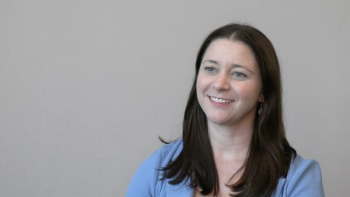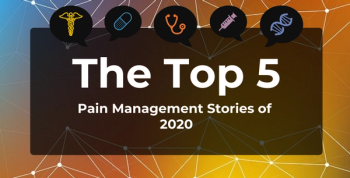
Studies Assess Lasmiditan’s Safety in Pediatric and Elderly Migraine Patients
Two abstracts presented at the Migraine Trust Virtual Symposium investigated lasmiditan’s safety in elderly and pediatric migraine patients.
The safety and tolerability of lasmiditan (Reyvow) in elderly and pediatric populations was the focus of two studies presented at the Migraine Trust Virtual Symposium. Lasmiditan, a selective serotonin (5-HT1F) receptor agonist, is FDA-approved for acute migraine treatment in adults.1
In one of the studies, researchers aimed to assess lasmiditan’s pharmacokinetics (PK), safety, and tolerability in pediatric migraine patients (aged 6 to <18 years).2 This was the first study do evaluate its safety in pediatric patients.
The phase 1, multicenter, open-label
Over a 24-hour period, blood samples were collected to measure PK, maximum concentration (Cmax), time to maximum concentration, and area under the concentration curve. Patients were migraine-free during their involvement in the study, and follow ups were done about 14 days after dosing.
The time course of lasmiditan concentration was similar in both cohorts, with a median Cmax time around 1.5-2 hours post-dose followed by a decline with a geometric mean half-life of about 4 hours. Total body clearance was greater in the 200 mg cohort, an outcome that researchers attribute to differences in both dose and body weight.
Eighteen patients (11 in cohort 1, 7 in cohort 2) received lasmiditan, and 17 completed the study. One patient in cohort 2 dropped out due to adverse events (AEs). No deaths or serious AEs were reported, and the frequency and severity of AEs were similar to those seen in adult studies.
Overall, the study concluded that lasmiditan’s safety and tolerability in pediatric patients were similar to what has been found in adult studies, and that PK results support weight-based dosing of lasmiditan in pediatric migraine patients.
“These findings support further investigation of lasmiditan as a potential treatment in pediatric patients,” they wrote.
In another abstract, researchers analyzed two phase 3 clinical trials to assess lasmiditan’s treatment-emergent adverse events (TEAEs) in elderly patients versus non-elderly patients.3 The
In both studies, adults took either a placebo, 50 mg, 100 mg, or 200 mg of lasmiditan for a single migraine attack within 4 hours of moderate to severe pain onset. The new analysis of the data from both studies evaluated TEAEs that occurred within 48 hours of the first dose in elderly (≥65 years) versus non-elderly (<65 years) patients. Logistic regression analysis gauged treatment-by-age subgroup interactions.
The data included 3177 lasmiditan-treated patients and 1262 placebo-treated patients. In the lasmiditan group, 132 (4.2%) patients were elderly, and the placebo group included 54 (4.3%) elderly patients. The elderly and non-elderly cohorts had a similar percentage of patients with at least 1 TEAE (34.8% and 35.7%, respectively).
There were no significant treatment-by-age subgroup interactions overall or where specific TEAEs were concerned, although there were some differences in the incidence of specific TEAEs in the elderly versus the non-elderly groups. Even so, researchers concluded that there were no notable trends or safety signals in the elderly group.
On the whole, the analysis found similar rates of TEAEs in the elderly and non-elderly cohorts. This abstract and the results of the phase 1 pediatric study provide some insight as to the safety and tolerability of lasmiditan across multiple patient populations.
References
1. FDA approves new treatment for patients with migraine. News Release. FDA; October 11, 2019. Accessed October 16, 2020.
2. Tsai M, Nery ESM, Kerr L, et al. A phase 1, open-label, single-dose pharmacokinetic study of lasmiditan in paediatric patients with migraine. Migraine Trust International Symposium; October 3-9, 2020. Abstract MTV20-DP-029
3. Buchanan A, Martin V, Ahmed Z. Tolerability of lasmiditan in elderly patients with migraine. Migraine Trust International Symposium; October 3-9, 2020. Abstract MTV20-DP-040
Newsletter
Stay ahead of policy, cost, and value—subscribe to AJMC for expert insights at the intersection of clinical care and health economics.



























































